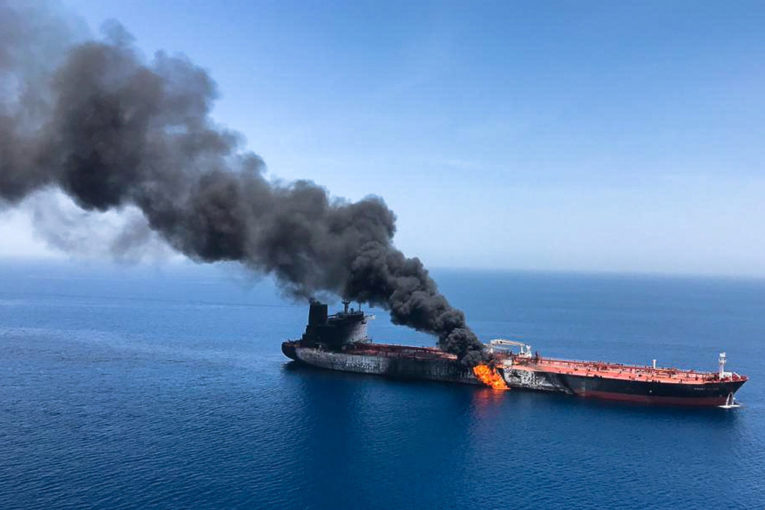
The U.S. government has accused Iran of being behind the Thursday attack on two tanker ships in the Gulf of Oman, but unlike in the past, when hostilities in the Middle East may have resulted in soaring crude prices, this time they’ve barely responded.
Brent Crude was up just 1.2 per cent Friday afternoon, in the wake of the attack, but was still down more than US$1.50 from the US$63.58 mark it at which it opened the week. U.S. benchmark West Texas Intermediate has followed a similar path, gaining only 0.4 per cent on Friday. Western Canada Select finished the week as the best performer of the three and was up two per cent on Friday.
The relative lack of movement in oil prices may be a sign that markets are skeptical that Iran’s alleged act of aggression will lead to further serious conflict, according to Edward Moya, a senior market analyst at Oanda. The oil markets have already priced in these smaller acts of aggression, he said.
“There’s no strong belief that this is going to escalate into a significant conflict,” Moya said. “The boats they’re targeting aren’t U.S. ships, they’re not the main ones from Europe so we’re thinking that this is methodical positioning when they’re looking here to stay relevant and provide a stronger support for higher oil prices.”
In past decades, acts of aggression in the Middle East led to massive booms for oil due to concerns over supply being at risk. Perhaps most famously, oil prices more than doubled in the U.S., increasing to US$46 from US$21 between July and October 1990 due to the Gulf War. The same occurred a decade earlier during the Iran-Iraq war, which saw oil prices double in two years.
The current act of aggression, the second in two months, is different, Moya said. Neither of the two tankers attacked on Thursday, nor any of the four that were damaged in a May 12 attack, were American, leaving Moya to believe that if Iran is indeed behind the attacks, they’re simply an attempt to artificially inflate prices to boost its struggling economy.
A major escalation would have a different effect, he said, projecting a US$10 to US$15 gain to Brent Crude if the U.S. and Iran were to become embroiled in physical conflict.
U.S. President Donald Trump has reportedly told administration officials that he does not intend to go to war with Iran. His national security adviser, John Bolton, has used the same rhetoric.
Relative lack of movement in prices may be a sign that markets are skeptical that Iran’s alleged act of aggression will lead to further serious conflict.
Edward Moya, a senior market analyst, Oanda
Researchers, however, are not exactly convinced.
RBC Capital Markets’ global head of commodity strategy Helima Croft wrote in a note to clients that “escalation will likely be the order of the day as long as the United States continues its ‘maximum pressure’ policy and insists that Iran completely abandon its revolutionary agenda.”
Eurasia Group, a political risk consultancy, placed the probability of a war between the U.S. and Iran in 2019 at 30 per cent — a full 10 per cent higher than what the group believes the chances are for the two sides to enter negotiations over prisoner exchanges and nuclear attacks. The prospect of tensions simply continuing to rise on both sides was given a 50 per cent probability.
Should the tensions lead to war, Eurasia Group projects a Gulf War-like spike to oil prices, according to a report it published on Friday. For a limited war, which Eurasia Group defines as a days-long conflict that involves tit-for-tat attacks, oil prices in the U.S. could surpass US$100. A prolonged war, the group said, could see oil prices hit US$150.
Stopping the escalation is in Trump’s hands, according to Eurasia Group analyst Henry Rome.
“Trump is the most important firebreak against escalation,” Rome said.
You can read more of the news on source
